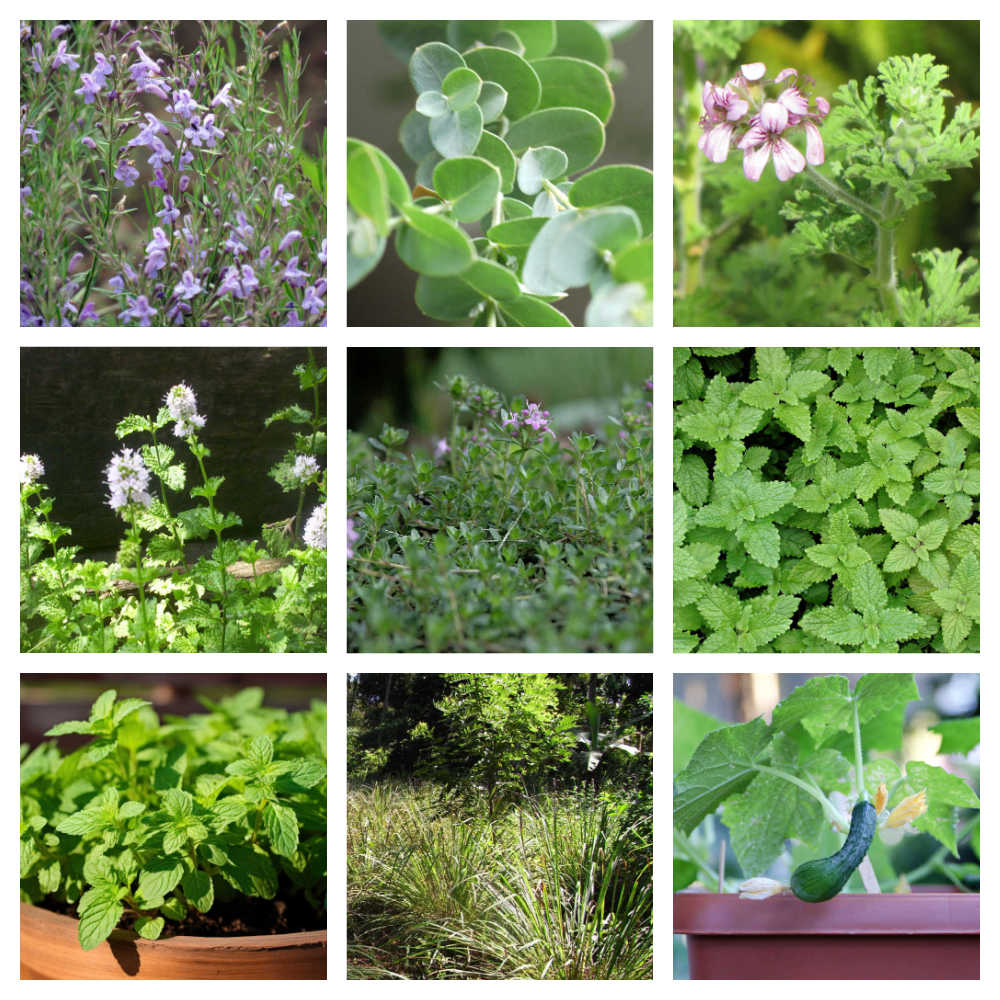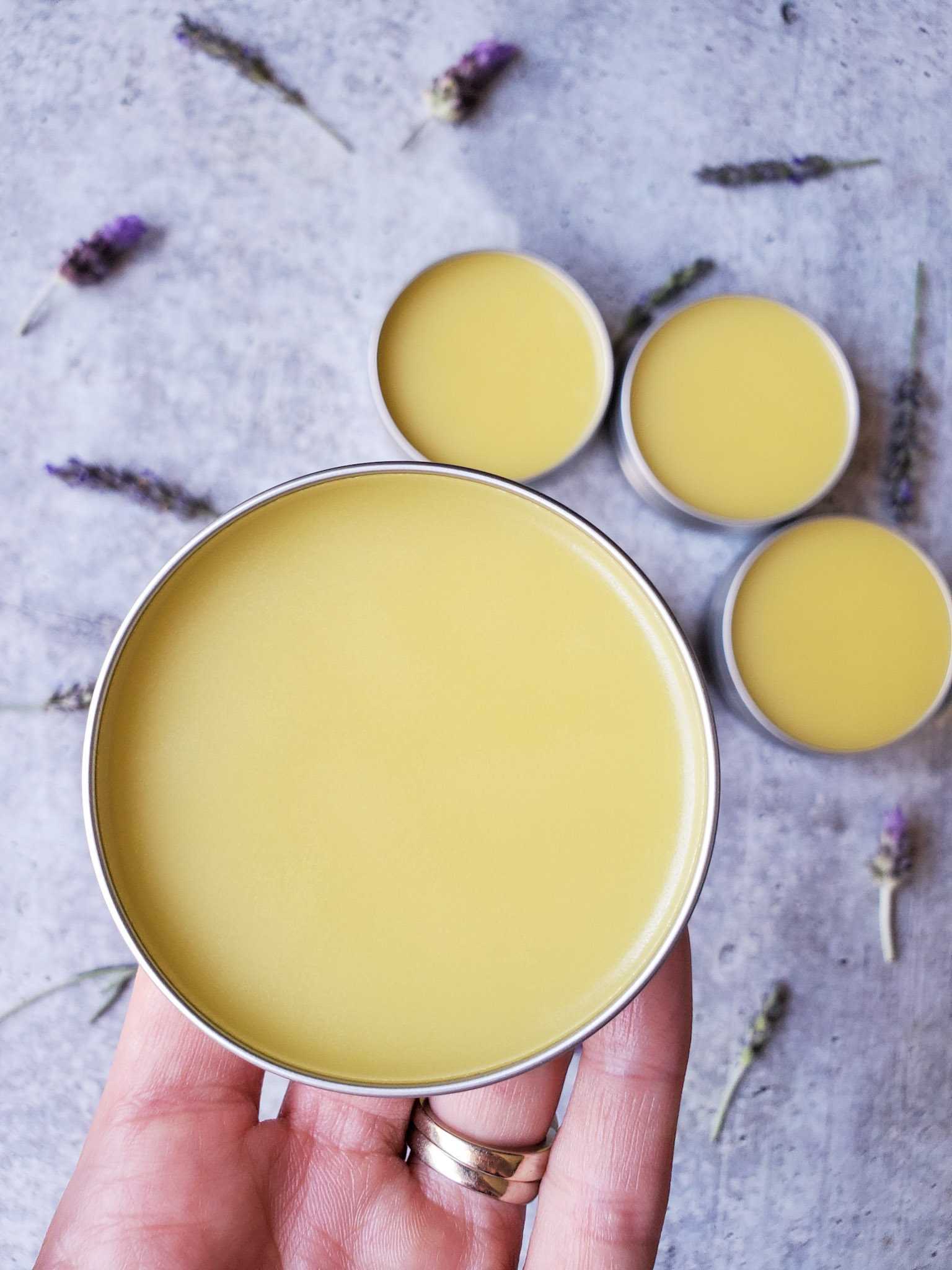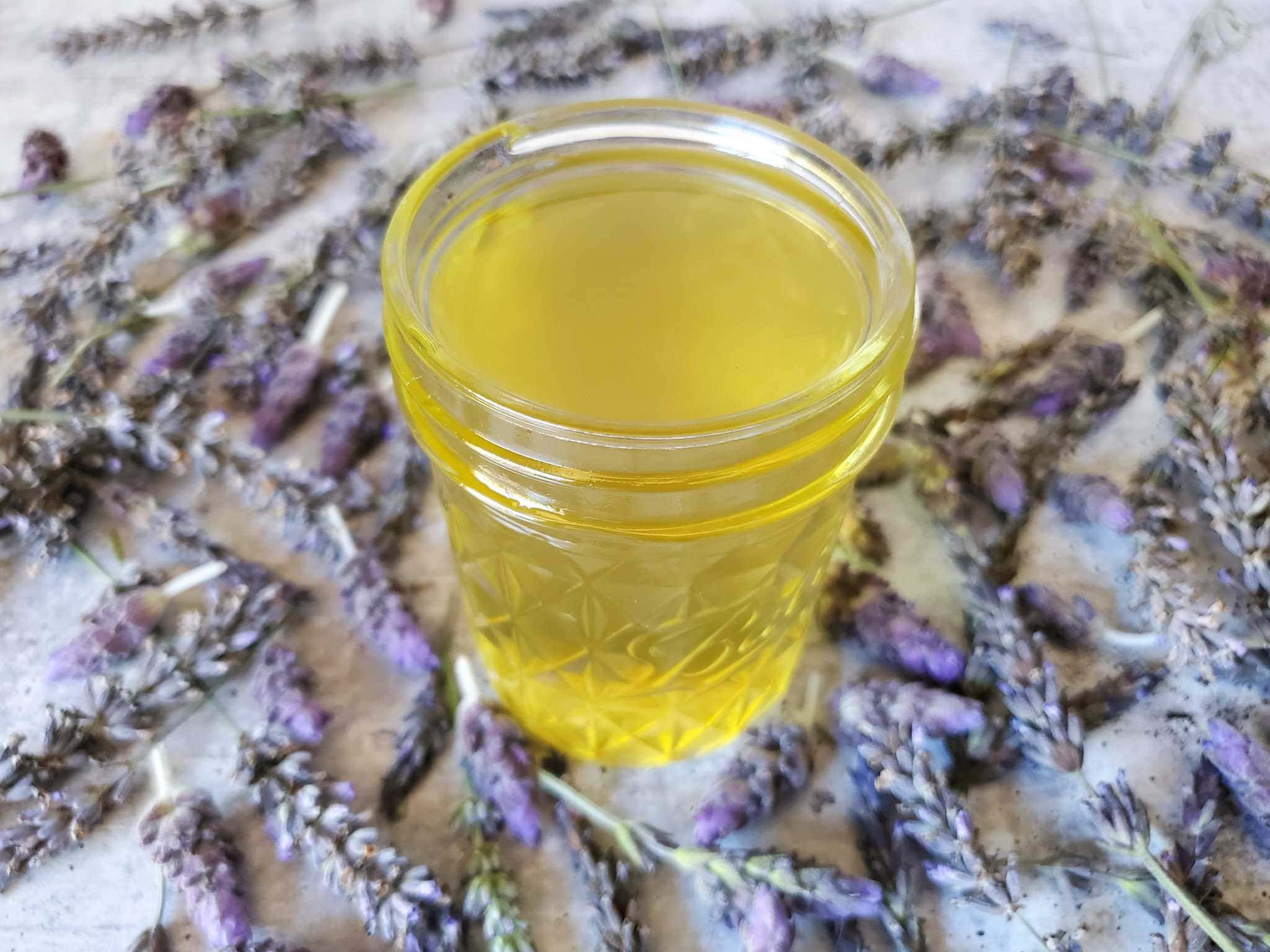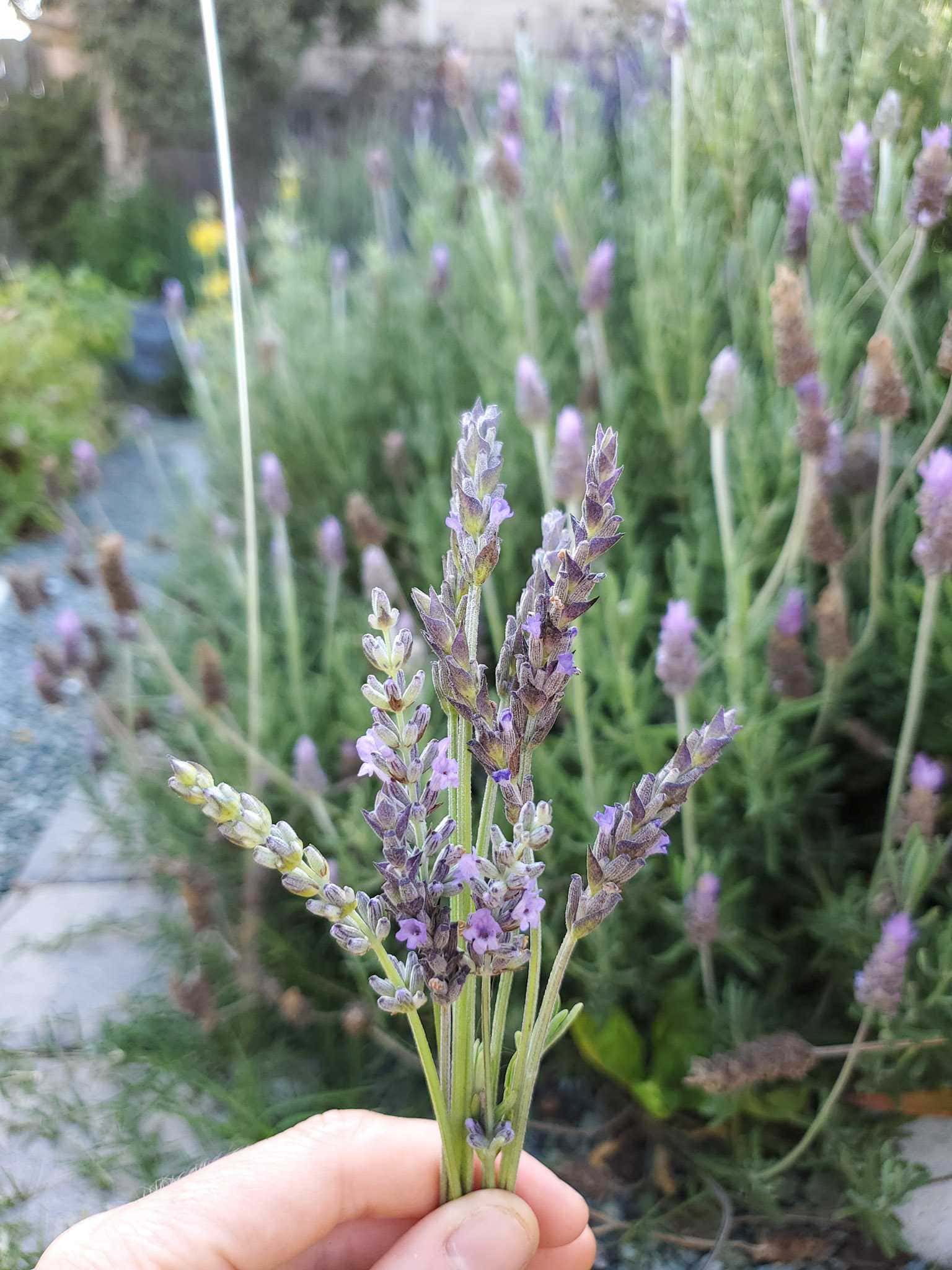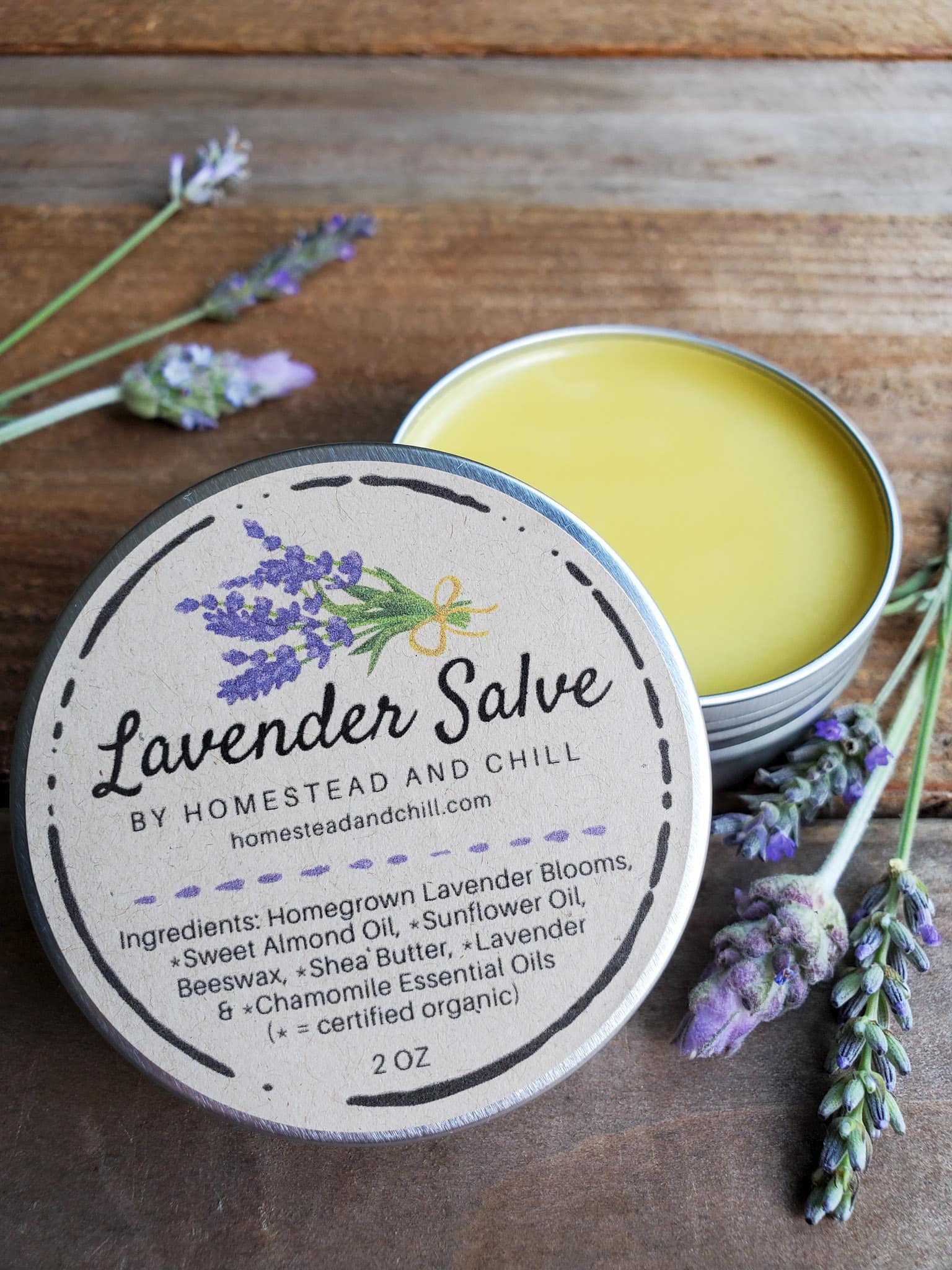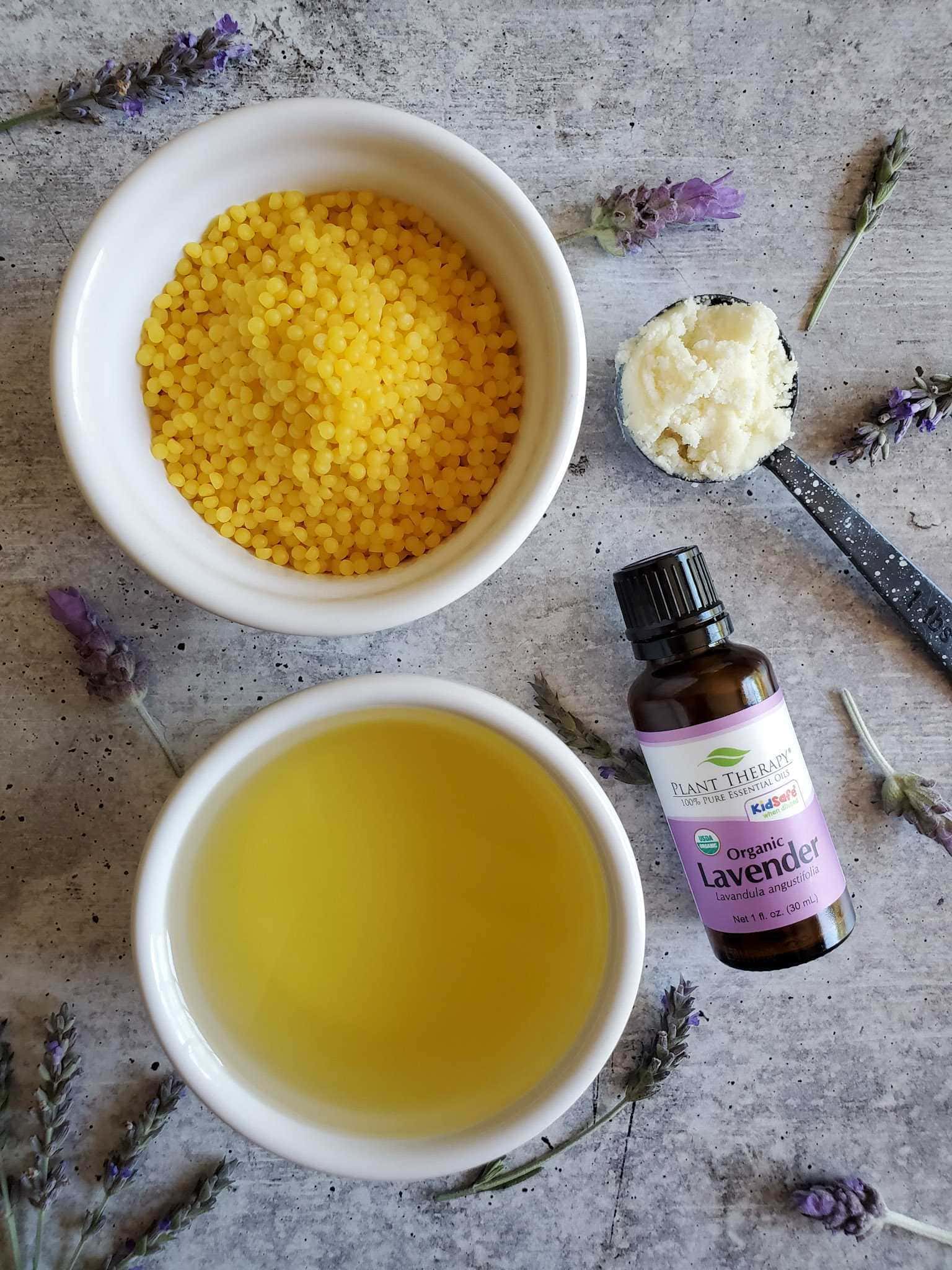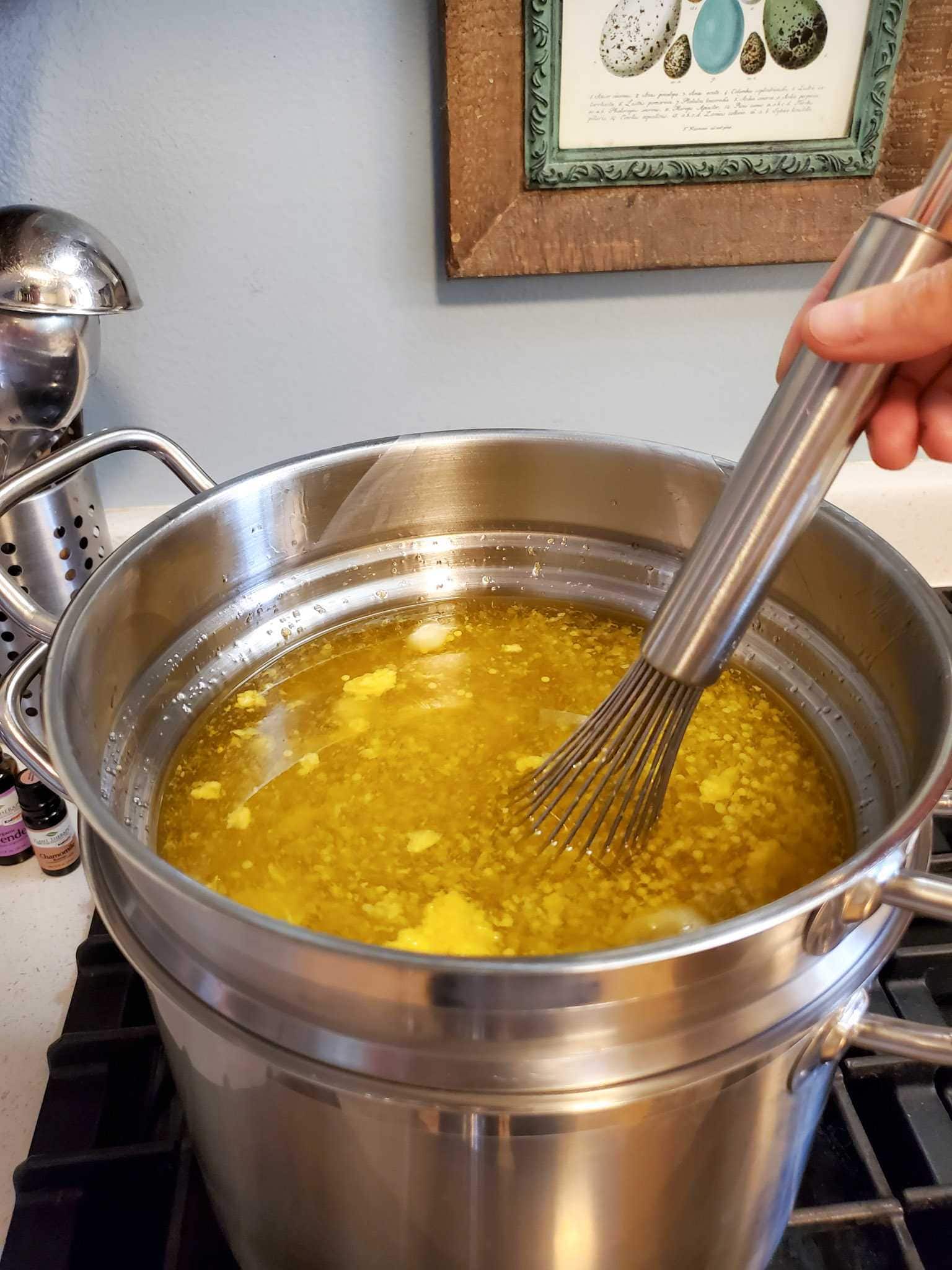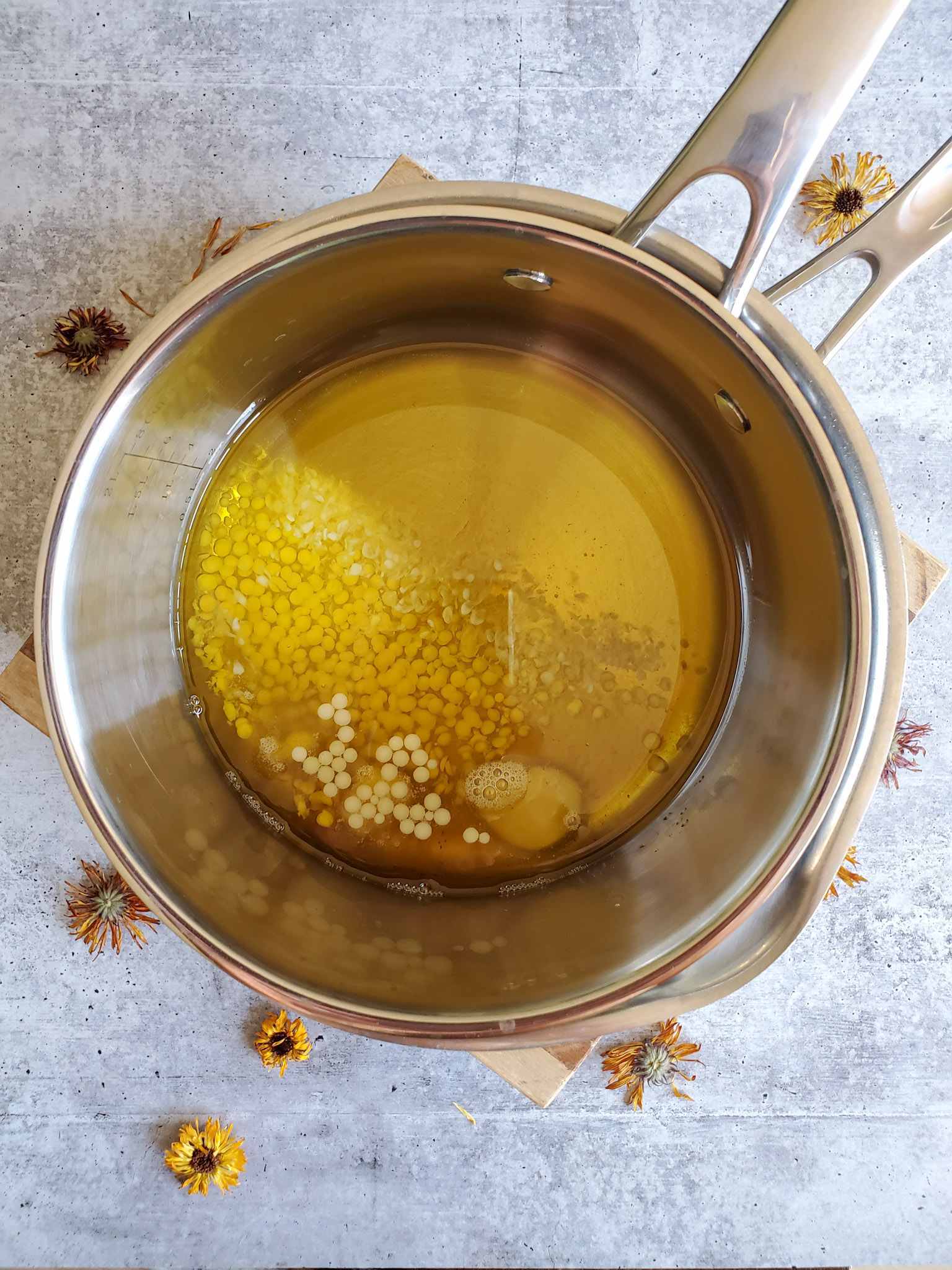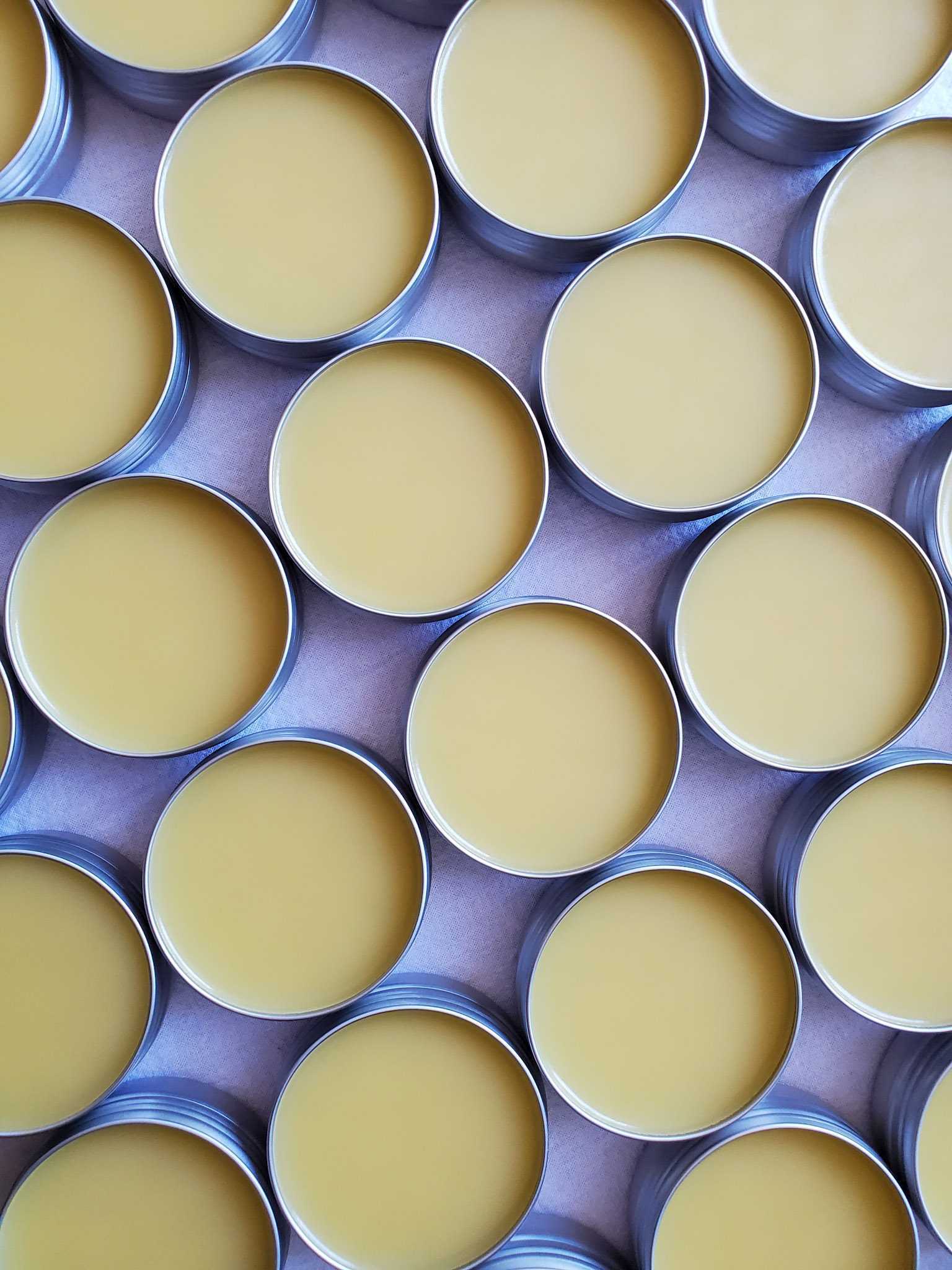Glorious summer days spent outdoors can quickly be spoiled by pesky wasps, annoying mosquitoes, relentless ants, and painful sunburns.
But don’t worry! I’ve gathered some super smart summer hacks to help you tackle all these nuisances quickly and effectively, including:
DIY WASP TRAP
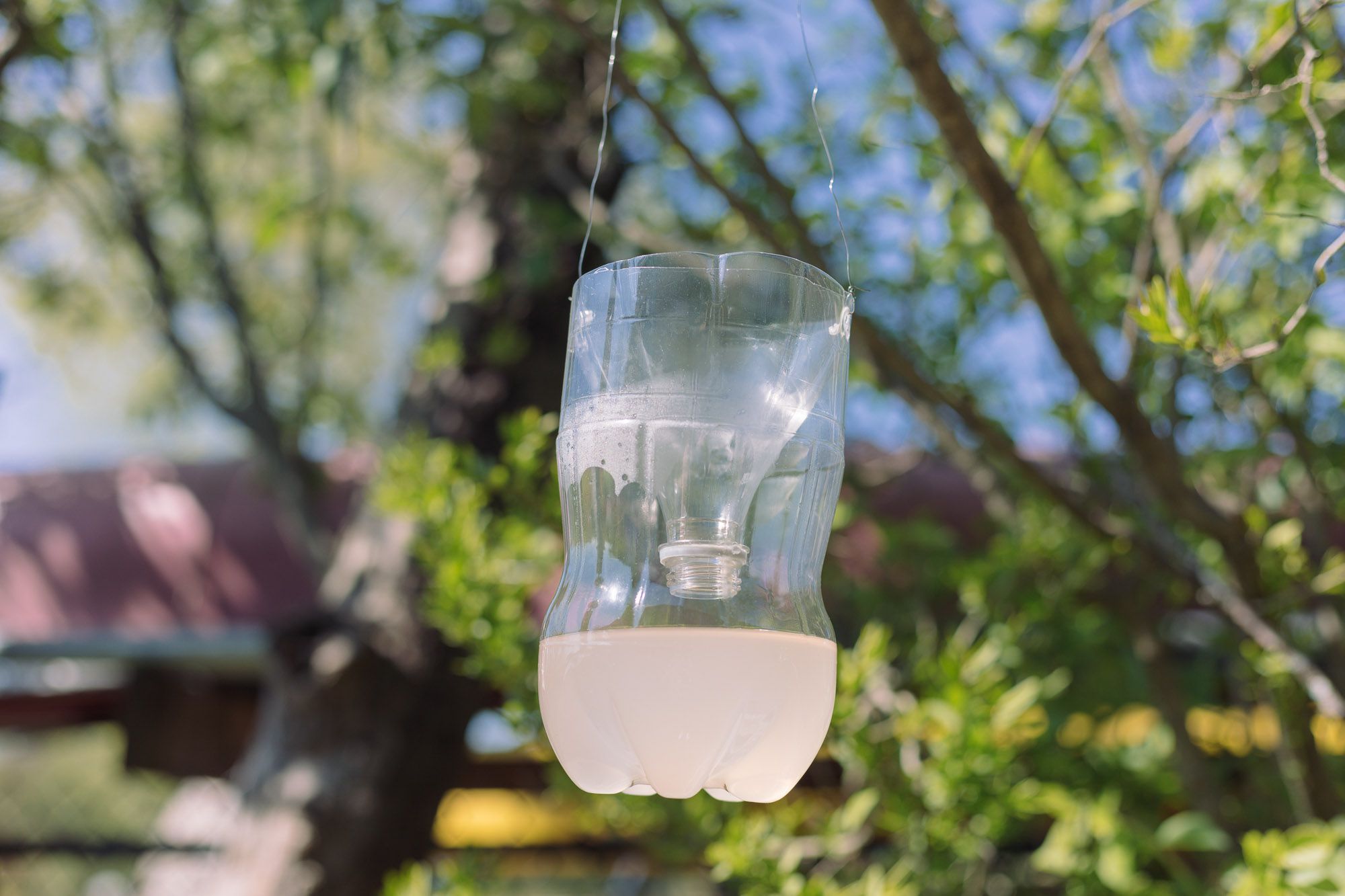
Unfortunately, it can be challenging to keep wasps out of the garden when you have lovely, sweet-smelling fruit trees that attract them.
If wasps become a problem, you might need to create a DIY wasp trap. However, only set it up if you’re dealing with an infestation, as it can attract even more wasps to your garden. If you just want to eliminate a few wasps, try this DIY wasp spray instead.
Making this trap is simple:
- Take a large plastic bottle.
- Cut off the neck of the bottle.
- Invert the neck and place it inside the bottle to create a funnel.
- Poke handle holes on either side of the bottle using a screwdriver.
- Remove the funnel and add your wasp bait (see below).
- Reinsert the funnel and tie string through the holes to create a handle.
- Hang the trap on the opposite side of the garden from where you want to relax!
Wasp Trap Bait
Different baits work best at various times of the year:
- Spring: Combine cooked meat fat, water, and a little dish soap. The meat fat attracts wasps during their breeding season.
- Mid to Late Summer: As fruit ripens, use fruit juice or pieces of ripe fruit mixed with dish soap. The dish soap suffocates the wasps, preventing them from flying so they become trapped.
Caution: Be very careful when emptying the trap, as there may be live wasps inside.
Tip: To safely block the funnel overnight, quickly place a tennis ball on top of the trap. The wasps will be dead by morning, and you can then flush them away.
Wasp Sting Remedies
If you do get stung by a wasp, use these quick home remedies to relieve pain fast.
WASP REPELLENT PLANTS

Plants that repel wasps can effectively help keep these pests away from your garden, patio areas, and dining spaces. Here are some effective wasp-repellent plants:
- Rue
- Lemongrass
- Citronella
- Eucalyptus
- Pennyroyal
- Marigolds
- Thyme
- Lemon Balm
- Basil
- Cucumbers
- Spearmint
- Peppermint
RUE
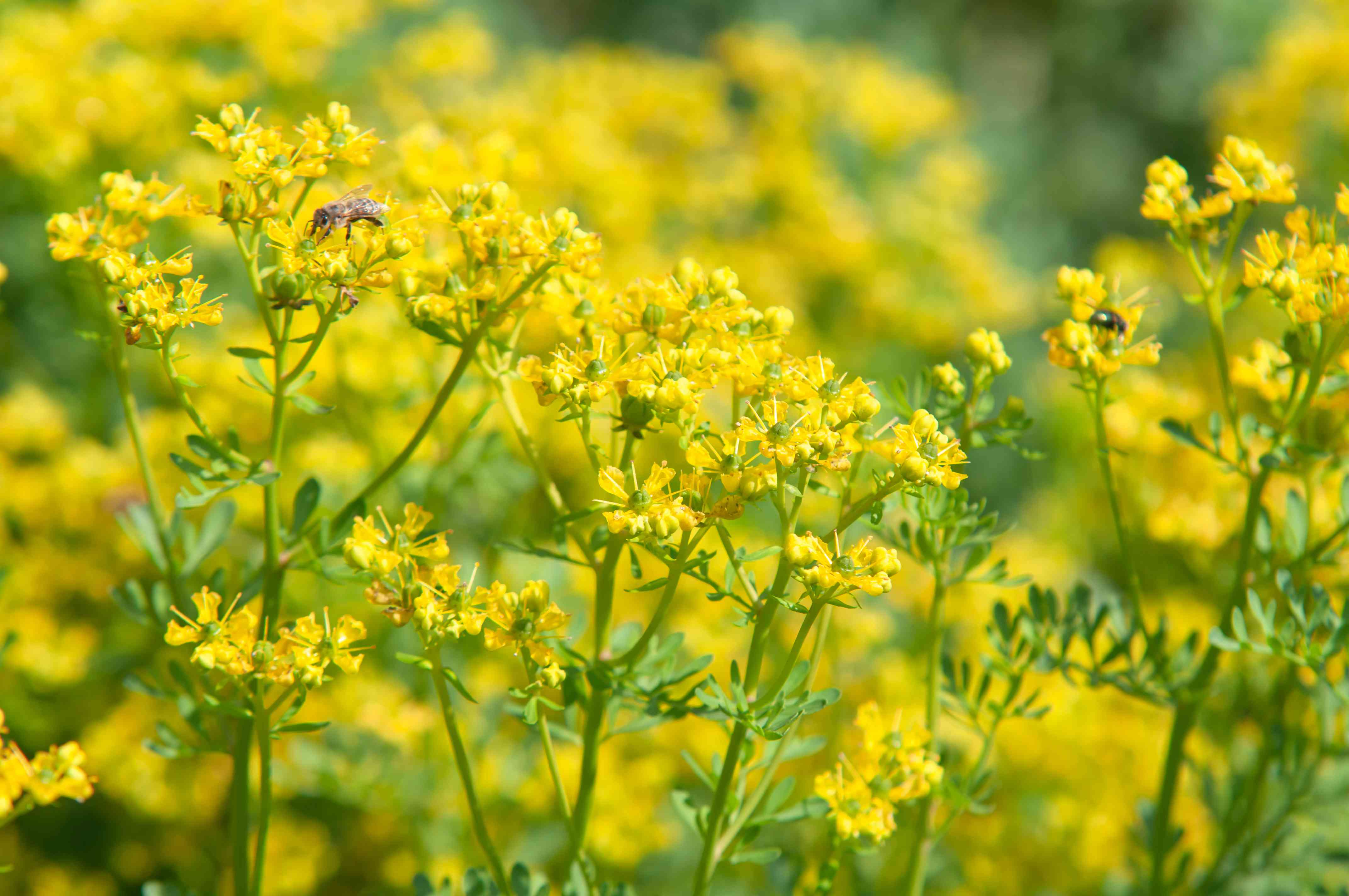
Rue is a semi-woody perennial herb characterized by its yellow flowers and growth height of 2-3 feet. This herb is effective at repelling stinging wasps.
You can plant rue alongside fruit trees to deter wasps, or use large pots of rue around patios to help keep these pests at bay. Its aromatic foliage not only serves as a natural repellent but also adds beauty to your garden space.
LEMONGRASS

Lemongrass is another effective wasp-repelling plant that grows to a height of 2-3 feet. Its tall, dense growth makes it an excellent choice for bordering backyards, gardens, and patios. In addition to repelling wasps, lemongrass adds a fresh scent to your outdoor spaces and can be used in culinary dishes.
CITRONELLA
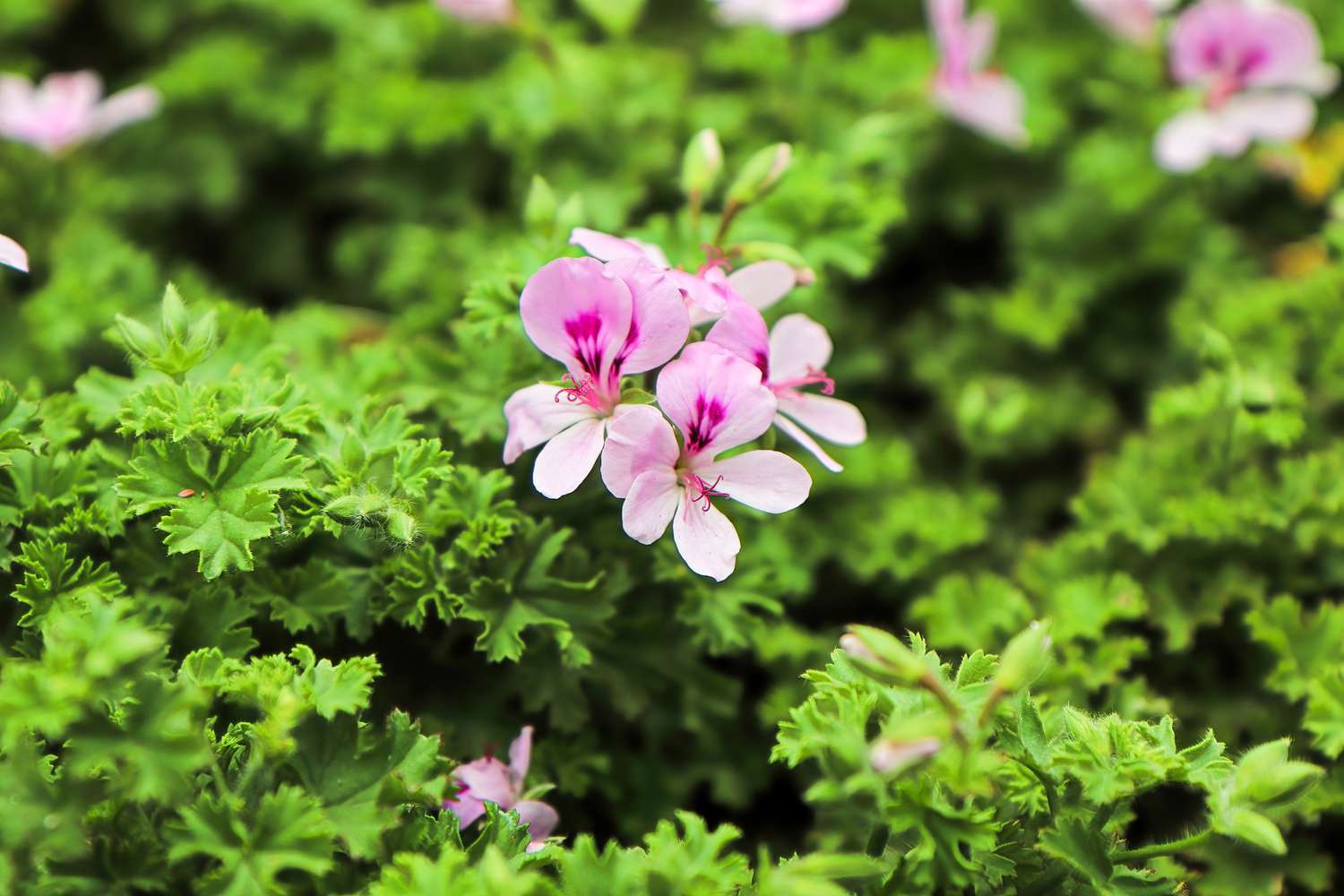
Citronella is a delightful plant with purple flowers and a scent that both wasps and mosquitoes dislike. Growing up to 2 feet tall, citronella can be effectively added to mixed borders to help repel wasps. Its aromatic properties not only keep pests away but also enhance the overall ambiance of your garden.
EUCALYPTUS
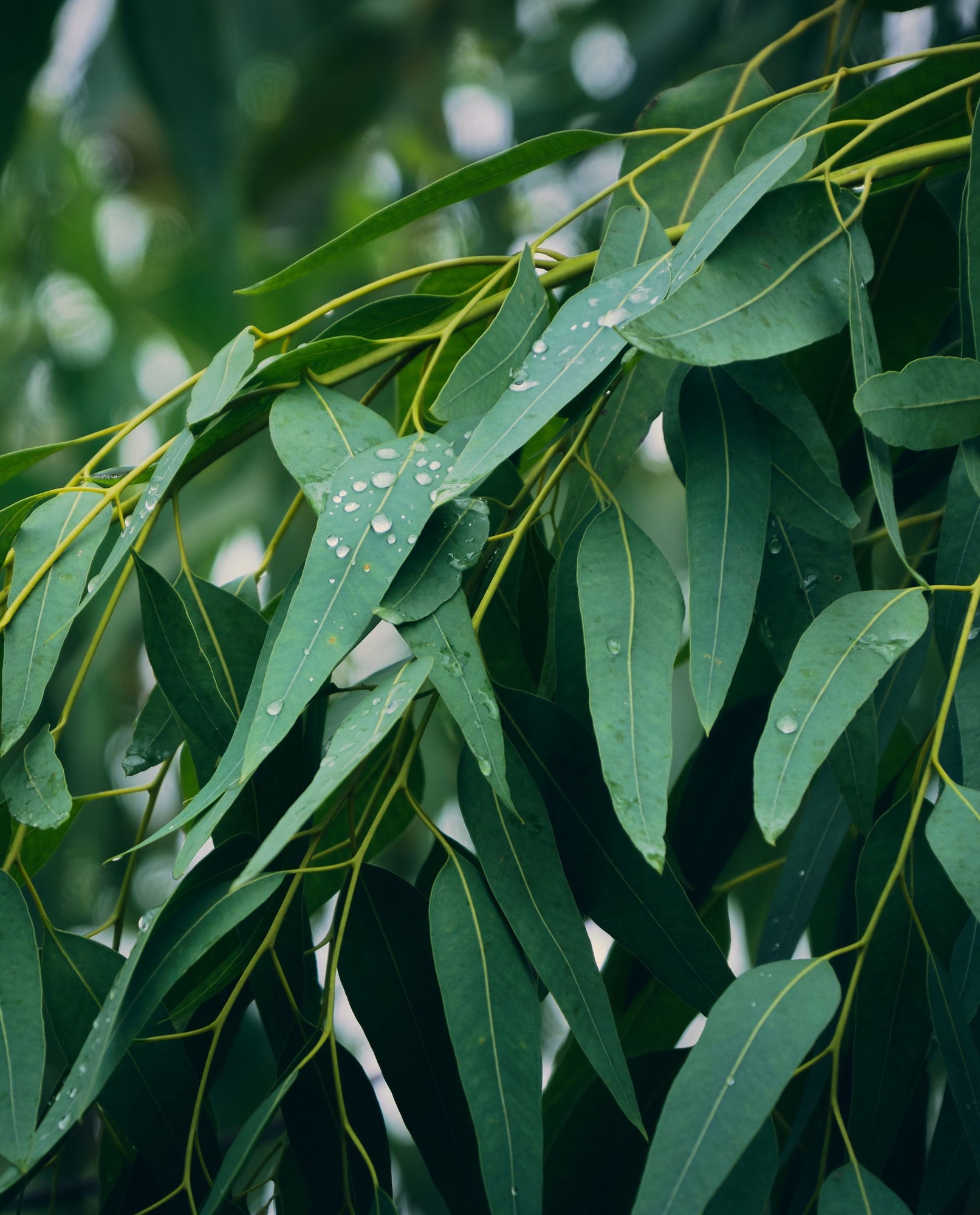
The beautiful eucalyptus tree is an elegant option for repelling wasps. It can be grown as a tall tree or, with proper pruning, maintained as a graceful shrub. Eucalyptus not only enhances the aesthetic of your garden but also emits a scent that deters wasps, making it a functional and attractive addition to your outdoor space.
PENNYROYAL
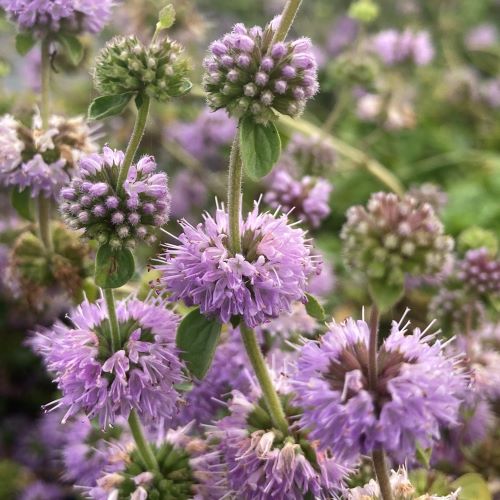
Pennyroyal is a charming flowering plant recognized for its ability to repel wasps and mosquitoes. However, it’s important to note that pennyroyal is toxic if ingested, so it’s best to avoid planting it near edible herbs to prevent any confusion. Its pleasant appearance can still enhance your garden while providing pest-repelling benefits.
MARIGOLDS

Golden marigolds are a vibrant addition to any garden, effectively deterring various pests, including mosquitoes, slugs, snails, and wasps. These hardy flowers are easy to grow in patio pots and can also be used to beautify garden tables, helping to keep wasps away from your food. Their colorful blooms not only enhance the aesthetic of your outdoor space but also serve a practical purpose in pest control.
THYME

Thyme is incredibly easy to grow, making it a great choice for both small patio pots and as a charming edging hedge. This fragrant herb not only adds beauty to your outdoor space but also helps repel annoying wasps. Its compact growth and low maintenance requirements make thyme an ideal addition to any garden or patio area.
LEMON BALM
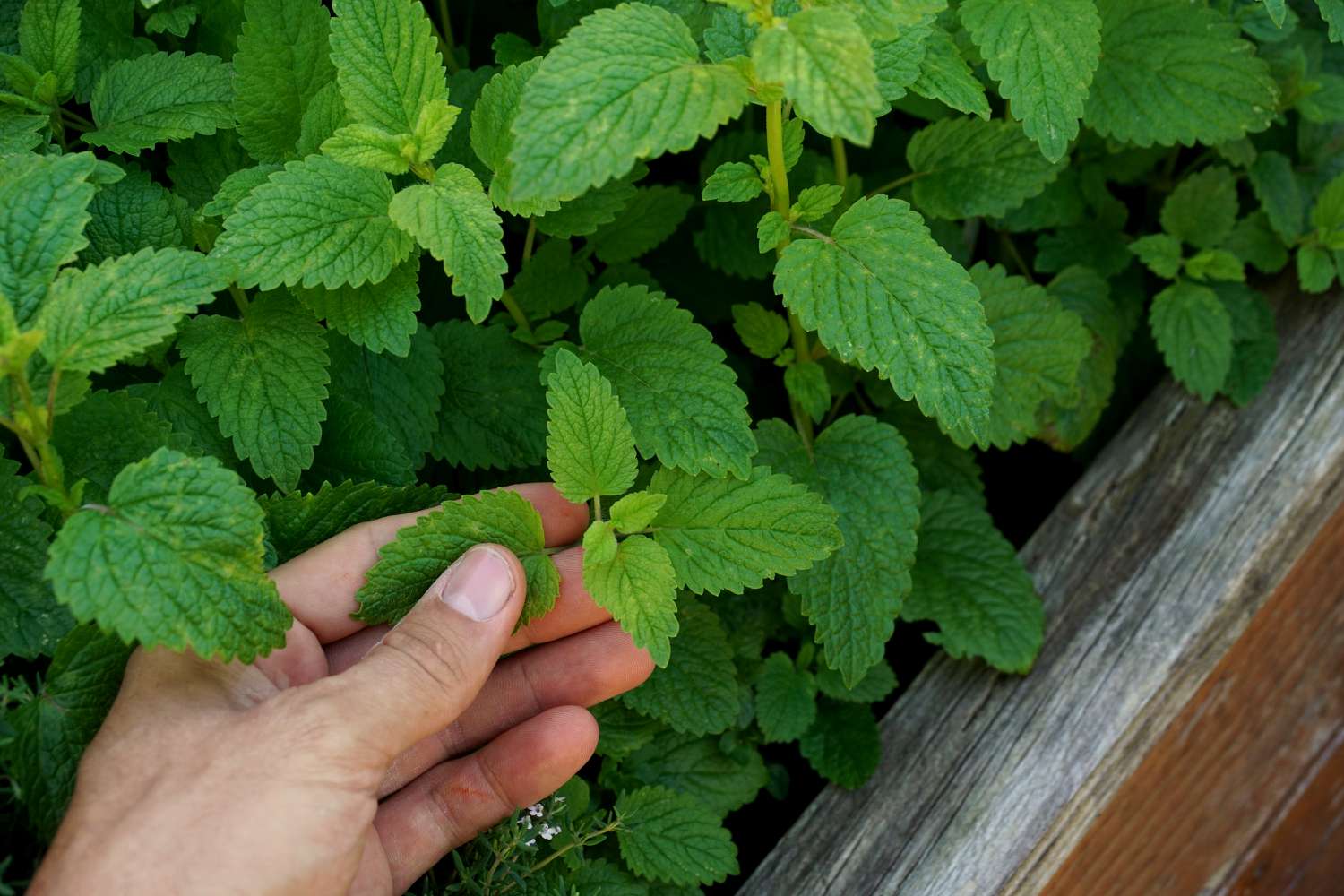
Lemon balm adds a delightful fragrance to the garden and is effective at repelling wasps. It looks beautiful in patio pots and can also enhance mixed borders and be planted around fruit trees.
BASIL
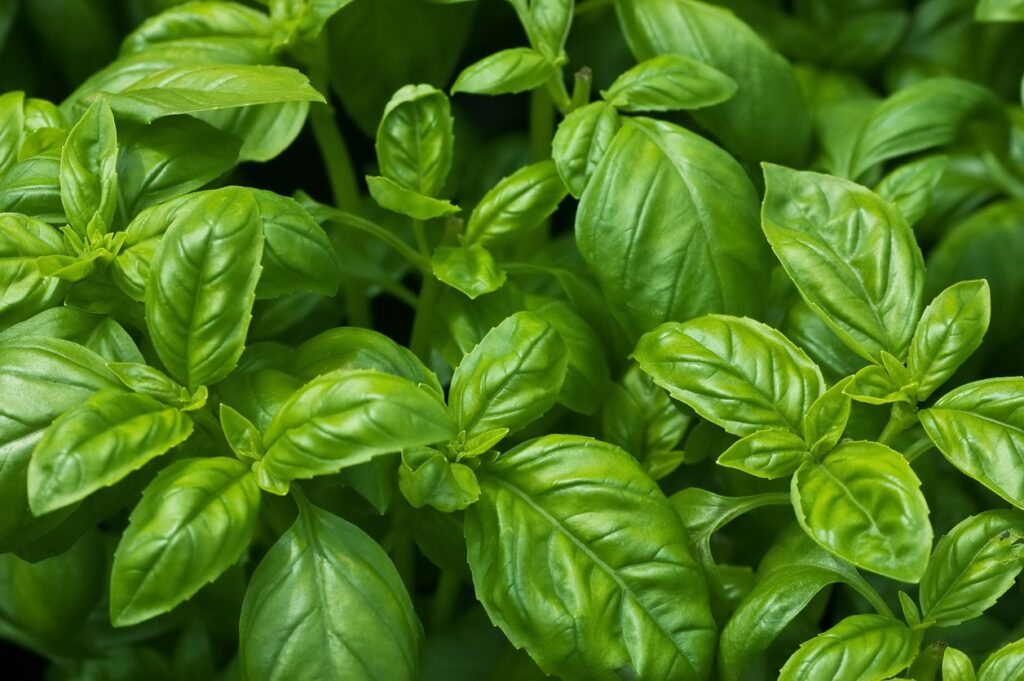
Basil is a simple-to-grow natural antibiotic that serves as an excellent wasp repellent, making it a perfect addition to any herb garden.
SPEARMINT
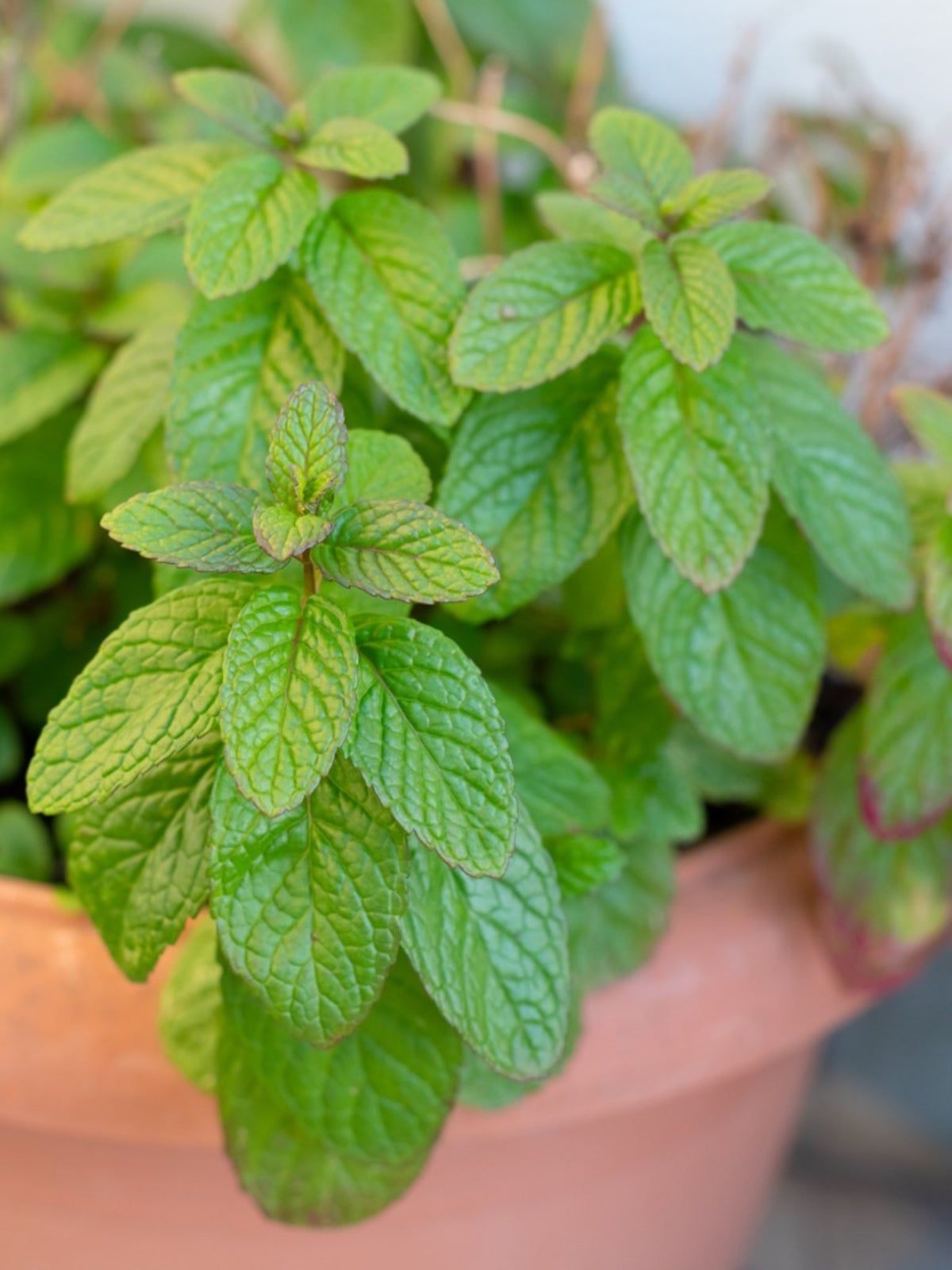
Place pots of wasp-repellent spearmint on your patio or porch to deter wasps while you relax or enjoy a meal. Plus, with fresh spearmint on hand, you can easily make a variety of recipes, including a deliciously refreshing spearmint iced tea—perfect for those long summer days spent on the porch!
PEPPERMINT

Peppermint is another easy-to-grow mint that effectively keeps wasps at bay. Having fresh peppermint in the garden is fantastic for whipping up delicious dishes like mint salad, mint sorbet, or the perfect mint mojitos!
CUCUMBER

Last summer, I grew wasp-repellent cucumbers for the first time, and they turned out to be a surprisingly enjoyable and easy gardening project. Cucumbers thrive in pots, allowing you to use them as a wasp-repellent plant on your patio or porch, as well as in your vegetable garden.
For additional tips, check out this guide to wasp-repellent plants from Five Spot Green Living.
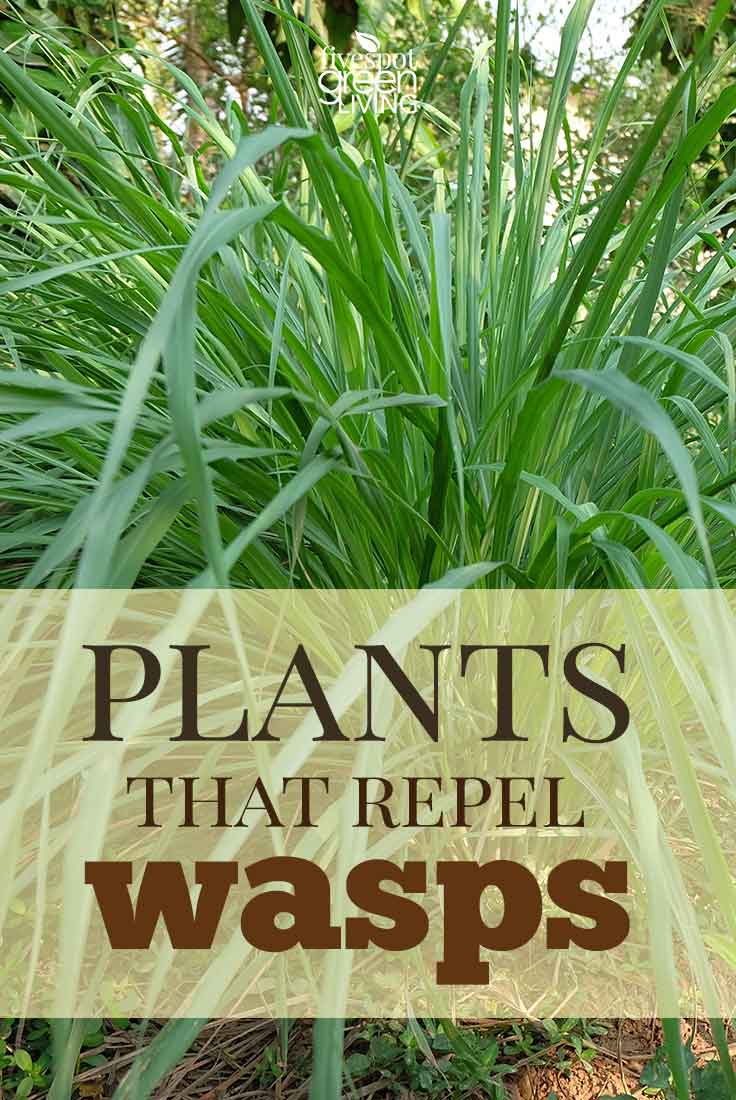
WASP REPELLENT SPRAY
A simple DIY wasp repellent spray can also help keep wasps at bay. You can carefully spray it on yourself and around tables and doorways.
Many common herbs repel wasps, so you can create a DIY wasp spray using an infusion of any of the following herbs found in your kitchen:
- Rosemary
- Chamomile
- Sage
- Mint
- Lavender
- Thyme
- Aniseed
- Fennel seed
- Cloves
While cloves are excellent at repelling wasps and flies, you might want to avoid spraying them directly on yourself!
To make the spray, combine equal parts of your herbal infusion (essentially a herb tea) with witch hazel in a small spray bottle.
Alternatively, if you’re a fan of essential oils, you can make this DIY wasp spray from Five Spot Green Living using clove, geranium, and lemongrass oils.
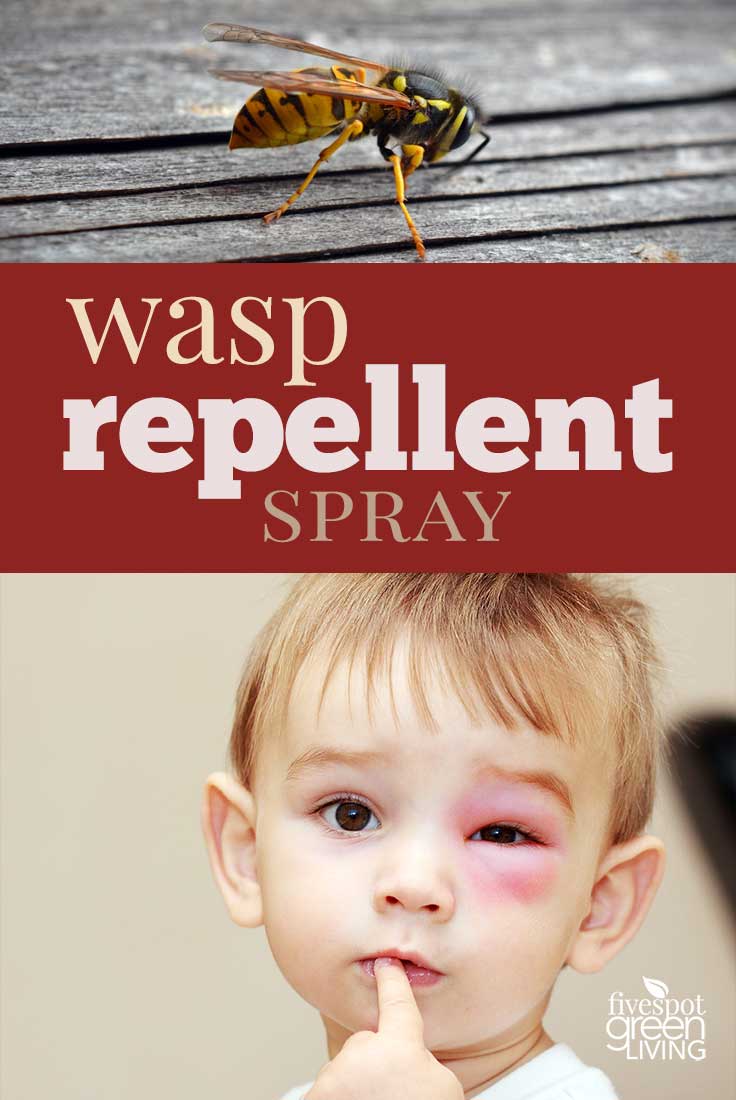
WASP KILLER SPRAY
I try to avoid killing bugs unless absolutely necessary, but sometimes you have to take action if wasps get inside the house. You need to be cautious when dealing with them, as it’s easy to get stung. However, if they land on a hard surface, I use my quick DIY fly spray to handle the situation.
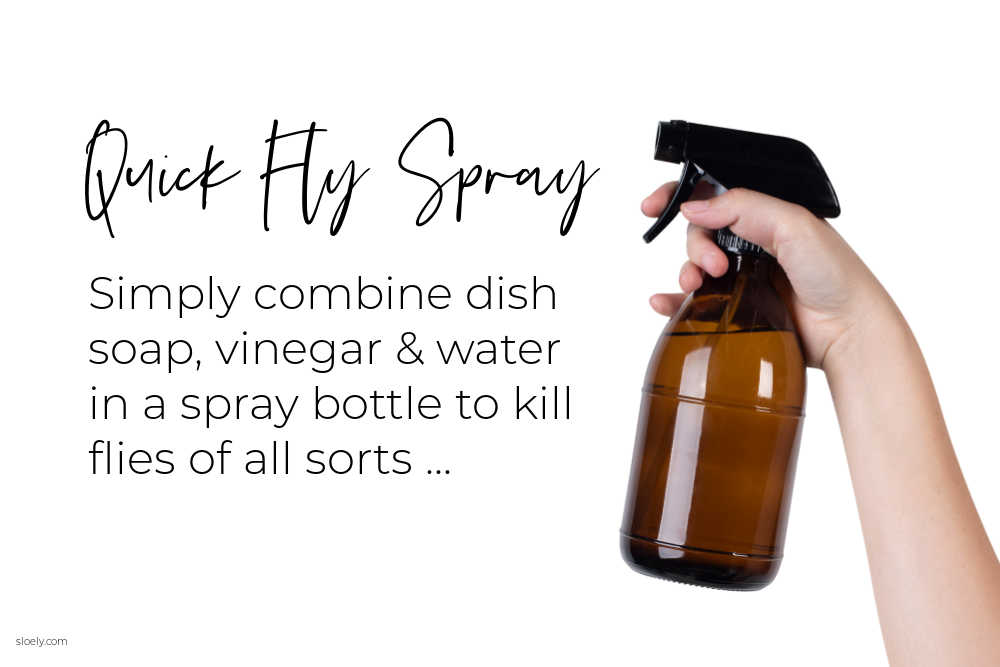
NATURAL MOSQUITO REPELLENT HACKS
I live on one of London’s old marshes, where there’s an underground river at the end of the street, so come summer, mosquitoes are everywhere. Fortunately, I have some super easy hacks to keep them away and prevent them from breeding:
- Burn Scents They Dislike: Use rosemary or sage on BBQs, or burn candles, incense sticks, or infusers with these scents.
- Spray Yourself: Apply scents they hate, such as lavender or mint.
- DIY Fly Trap Jars: Set up quick fly traps to catch them.
- Avoid Standing Water: Eliminate sources of standing water where mosquitoes can breed.
- Keep Pond Water Moving: Use an aerator or bubbler to keep pond water circulating.
- Use a Fan: Set up a fan on outdoor tables and by your back door to create a breeze that deters mosquitoes.
- Cook Garlic on the BBQ: The smell of cooking garlic is something they dislike.
- Drink Mint Tea: Enjoying mint tea helps you smell minty, which mosquitoes find unappealing.
- Hang Lace Curtains: Just like grandma used to, hang old-fashioned lace curtains for an added barrier.
- Plant Unwanted Flowers and Herbs: Incorporate flowers and herbs that repel mosquitoes in your garden.
For more information, check out tips below on making your own mosquito repellent candles, DIY bug spray, and bug balm. If you’re facing significant mosquito issues, take a look at this comprehensive guide to repelling mosquitoes.
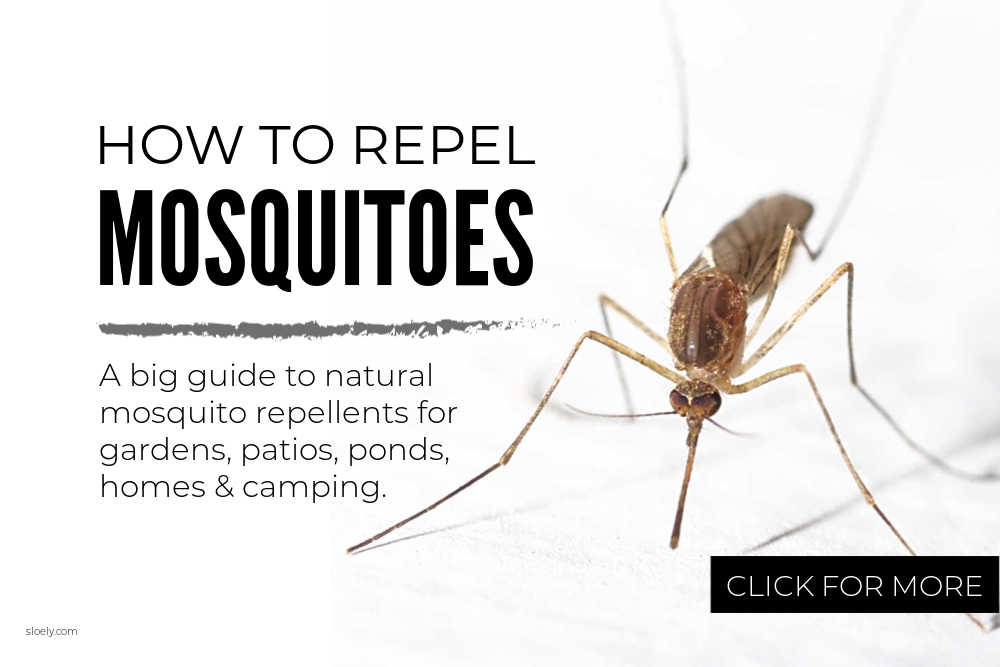
MOSQUITO REPELLENT CANDLES
Mosquito repellent candles are a fantastic hack for summer evenings, but you don’t have to spend a lot to get them. You can easily make your own using just:
- Empty jars
- Tealights
- Any mosquito-repellent herbs you have on hand
I grow mint and rosemary in my herb garden, so I often use those. You can also incorporate basil, as suggested in these DIY instructions from The Country Chic Cottage.

You can also add lemon that’s leftover from your drinks or, if you have it, a few drops of citronella oil, as seen in these versions from Bunch of Posies. This will enhance the mosquito-repelling properties of your candles!
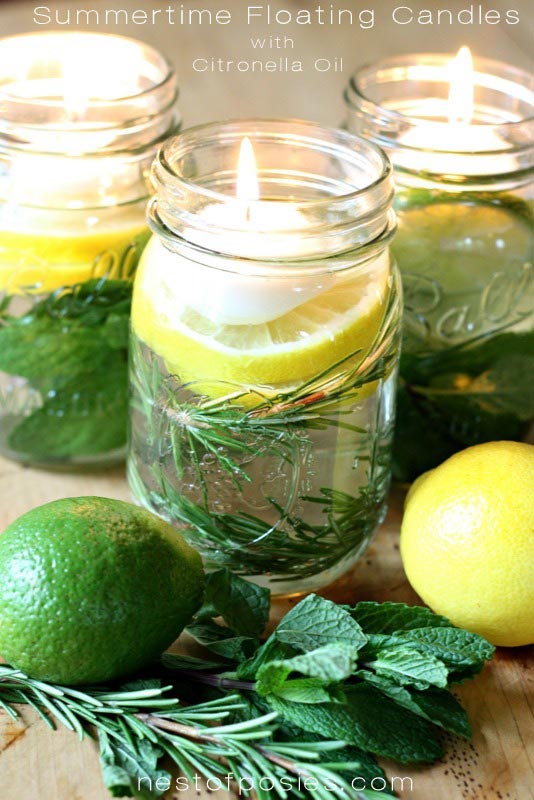
DIY BUG SPRAY
A simple DIY bug spray is an essential hack for keeping bugs away in the backyard, while camping, or anywhere your kids are having fun outdoors. To make your own, all you need is:
- A small spray bottle
- Witch hazel (which also works as a natural treatment for blackheads!)
- Any combination of essential oils that bugs dislike or herbal tea
For some fantastic tips on how to make bug spray with essential oils, check out One Essential Community.
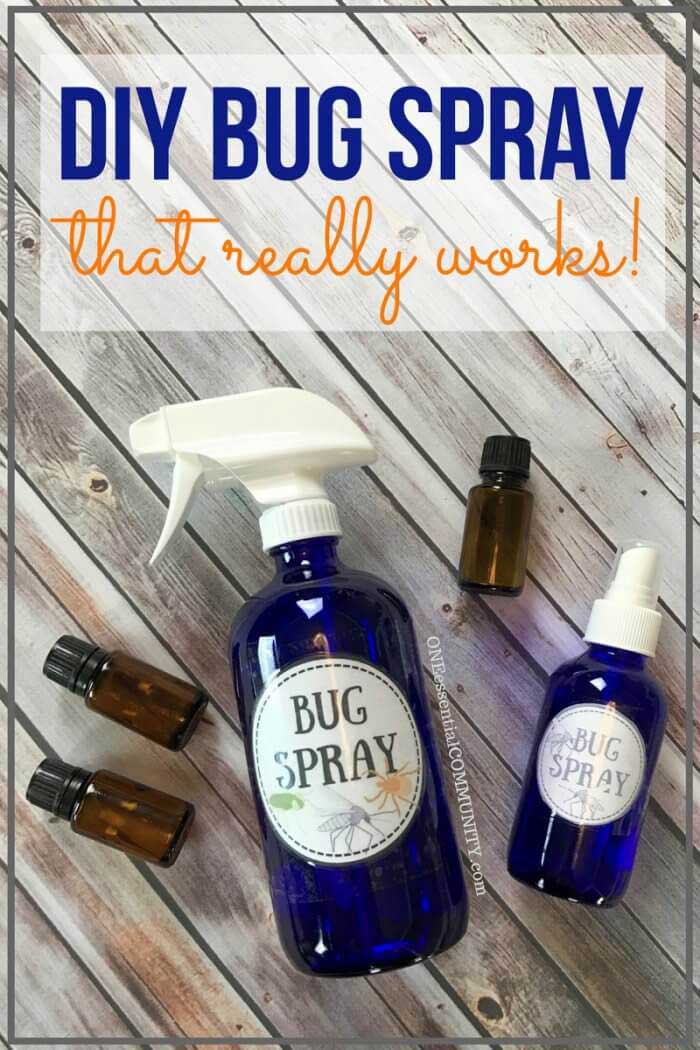
I make mine with a quick infusion of lavender, rosemary, and mint:
- Steep a handful of herbs in boiled water for 3 to 4 minutes.
- Let it cool (you can speed up the process by putting it in the fridge if you’re short on time).
- Combine the infusion in a spray bottle with equal parts of witch hazel.
- Shake well to mix everything together.
You can then spray it all over, but be sure to keep it away from your eyes!
NATURAL BUG BALM
If you really struggle with bug bites, you can make your own bug balm. The simplest trick is to add a few drops of essential oils with scents that bugs dislike to a big dollop of sunscreen in your hands. Lightly rub them together to combine, then apply to bare arms and legs—but avoid your face.
While I’m not a huge fan of essential oils—since many can be a bit of a con—there are a few that are worth having, like tea tree oil for head lice, athlete’s foot, and dandruff, plus lavender for bug spray and balm.
If you’re interested in making simple potions, check out this quick bug balm recipe from Wendy Polisi.

MOSQUITO BITE TREATMENTS
If you do get bitten, there are plenty of natural mosquito bite remedies in your kitchen for quick relief. Ice cubes and honey are among the best treatments, but you can also use everything from lemon juice to raw potato or banana peel!
If you’re going camping, hiking, or heading out on an outdoor adventure, be sure to take aloe vera gel or witch hazel with you.
For a comprehensive list of bug bite remedies, check out this bug bite treatment guide.
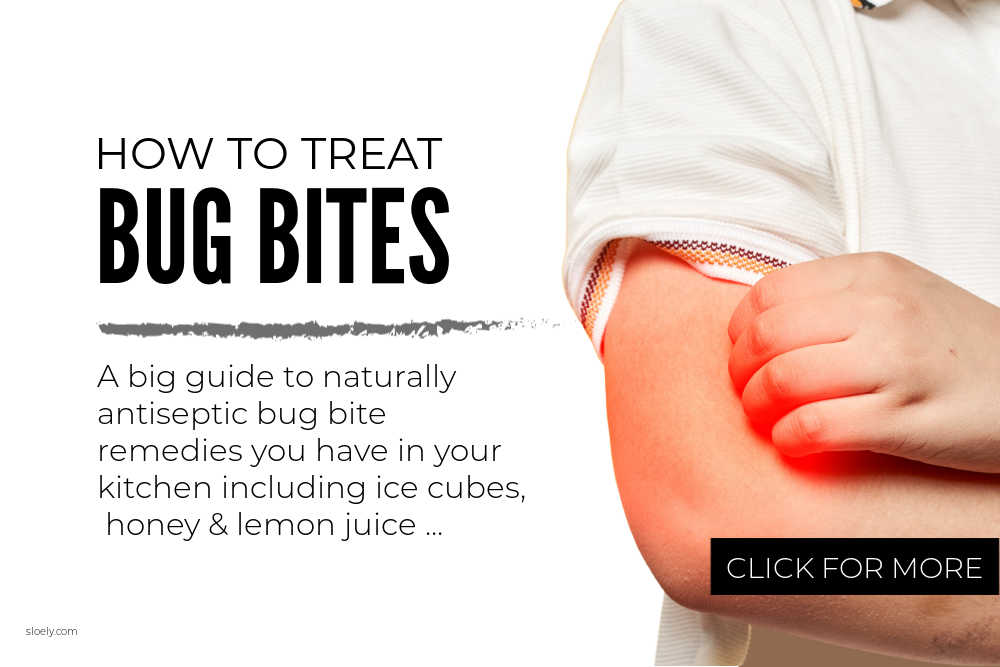
ANT REPELLING HACKS
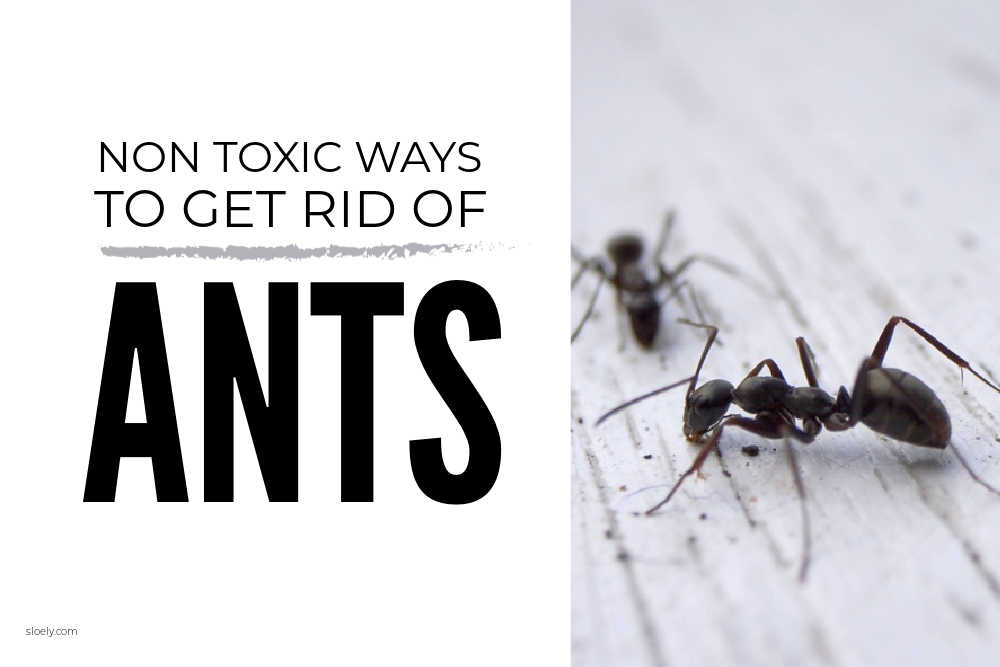
Nothing ruins a summer morning quite like an army of ants marching across your kitchen! I still have nightmares about it years later. The problem is that many ant poisons are toxic to other wildlife and pets.
However, a few simple natural hacks can help keep them at bay:
- Act Fast: Address the problem as soon as you see them inside.
- Squish Any You See: This helps reduce their numbers right away.
- Thoroughly Clean: Use dish soap to clean the areas where you see them entering.
- Wipe Down with Vinegar: After cleaning, wipe the surfaces with vinegar and let them dry.
- Create a Barrier: Make a barrier line at the entry points using:
- Diatomaceous earth
- Baking soda (bicarbonate)
- Cornflour or cornmeal
- Crumbled chalk
You can strengthen the barrier by mixing in these repellents:
- Cinnamon
- Ground cloves
- Pepper
- Paprika
Once you’ve stopped the ants from coming inside, tackle the source outside. For simple, practical tips on getting rid of ants naturally, check out this guide!
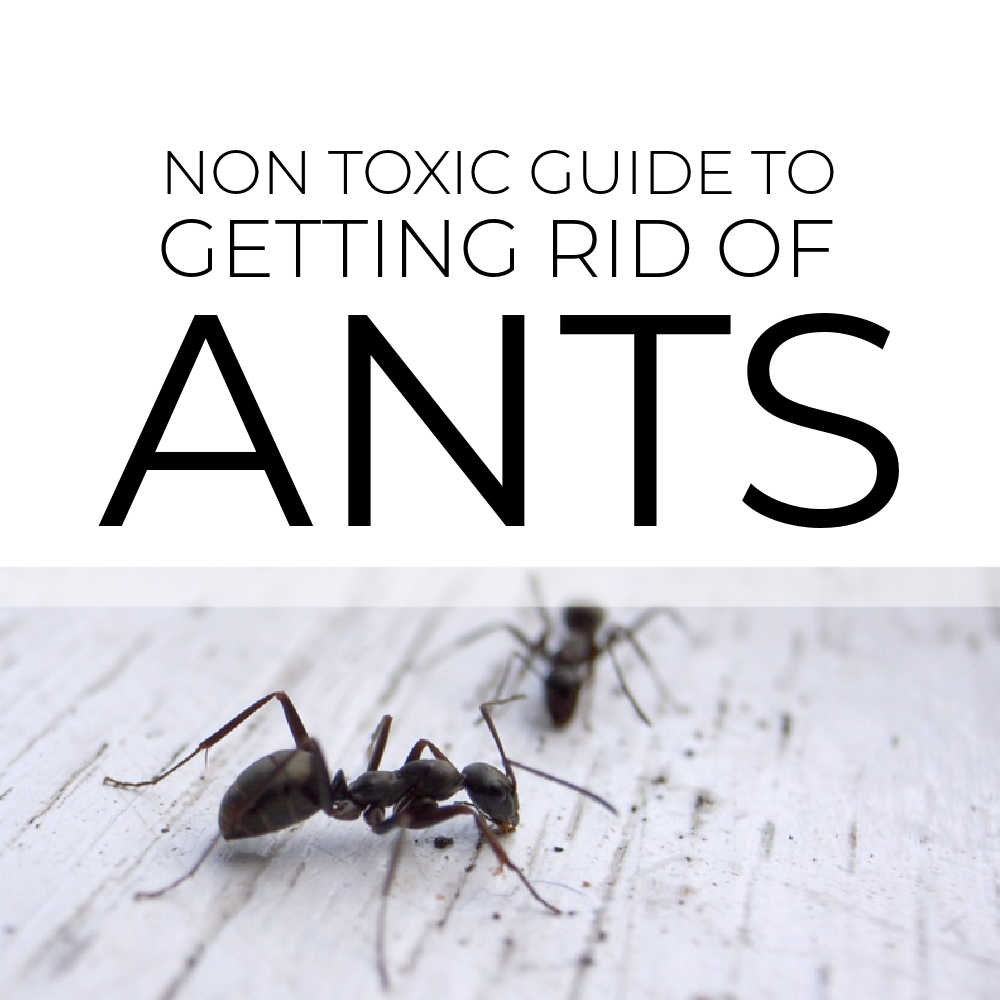
NATURAL SUNBURN TREATMENTS
It’s easy to get sunburned in the summer, even when we take precautions. Interestingly, cooler breezy days can be the most dangerous, as we often underestimate the sun’s strength. Fortunately, many common kitchen ingredients can effectively soothe pain and help prevent blisters naturally.

I have a long list of natural remedies for sunburn, but my favorite for severe burns is an oat milk bath. My super pale Scotch-Irish skin tends to burn easily, but a cool oat milk bath provides quick relief from the pain.
Here’s how I make it:
- Blend a few tablespoons of oats with a cup of tepid water until smooth.
- Pour the mixture into a cool or tepid bath deep enough to submerge the affected area.
- Relax in the bath for about 15 minutes.
For extra soothing benefits, you can enhance the oat milk mix by adding chamomile and lavender, as suggested by Shaken Together Life.
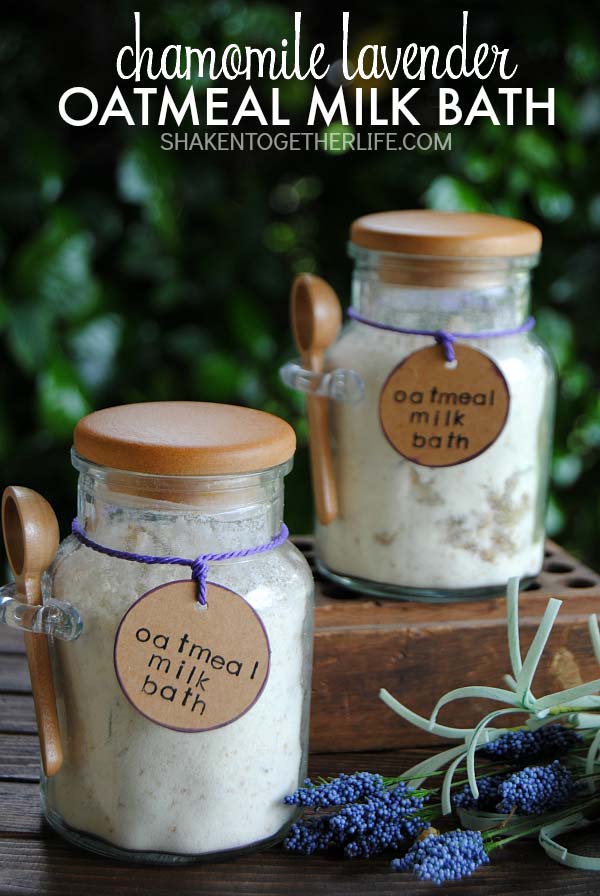
OUTDOOR FUN FOR KIDS
I love these summer hacks for outdoor play for kids! They’re not only super fun but also incredibly easy to make, allowing older kids to enjoy the process of creating them before diving into playtime. It’s a win-win situation!
DIY GARDEN HOSE SPRINKLER
This DIY garden hose sprinkler from Housing A Forest is a fantastic way to entertain the whole family! It can be assembled quickly and easily, making it perfect for spontaneous summer fun without any prior planning.
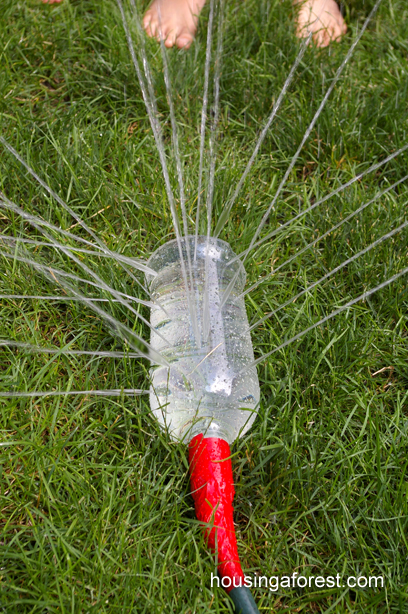
BUBBLE SNAKES
These bubble snakes are also super simple but super fun.

To make the bubble snake, you’ll need:
Materials:
- A plastic bottle
- An old sock
- An elastic band
- Dish soap bubble mixture
Instructions:
- Cut off the bottom of the plastic bottle.
- Pull the sock tightly over the cut end of the bottle.
- Secure it in place with the elastic band.
- Dunk the bottle into the bubble mixture.
- Blow hard through the neck of the bottle.
Watch as your bubble snake wiggles through the bottom!
TIC TAC TOE STONES
These DIY tic-tac-toe stones from Taryn Whiteaker are a wonderful project for making something with kids that they can enjoy outdoors all summer long. They’re not only fun to create but also provide endless hours of play!

And they couldn’t be easier to make! Just collect some stones during a hike or at the beach, and spend an afternoon painting them however you like. Older kids can get creative and artistic, while even little ones can leave their mark.
NATURAL PAINT BRUSHES
These delightful natural paintbrushes from Messy Little Monster are another fantastic no-prep activity that kids of all ages can create and enjoy using. They’re a great way to inspire creativity and make art in the great outdoors!

Simply head outside to your backyard, a park, or the woods to:
- Gather leaves, grasses, and flowers.
- Collect a bundle of twigs.
- Attach everything together with rubber bands.
Then, it’s time to paint away! Enjoy your creative outdoor fun!
CONCLUSION
In conclusion, these easy and fun DIY activities provide fantastic opportunities for kids to engage creatively with nature. From making bubble snakes and tic-tac-toe stones to crafting natural paintbrushes, each project encourages exploration and artistic expression without requiring extensive preparation. So, gather your materials, head outside, and enjoy the summer by creating lasting memories with your children!

